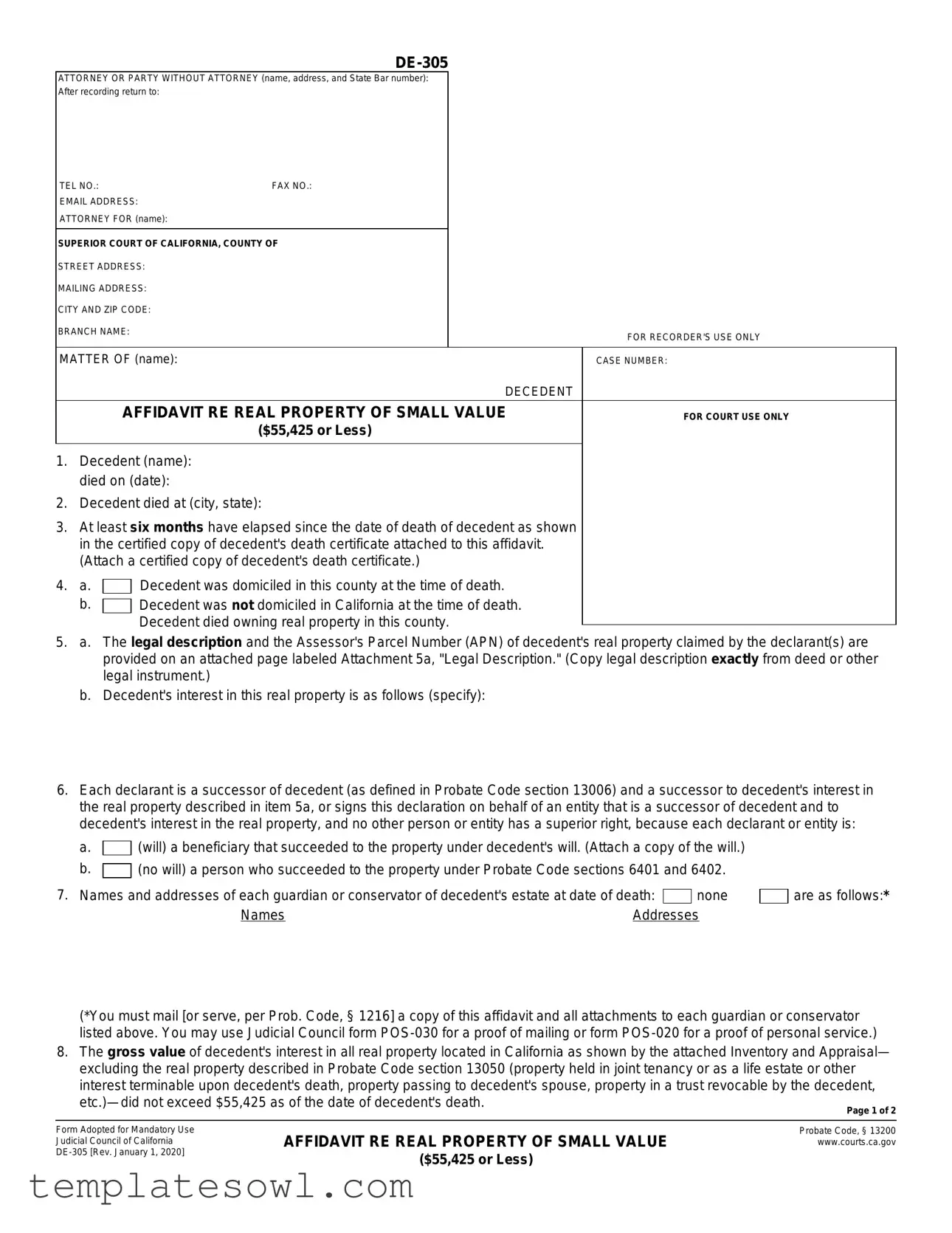What is the purpose of the DE-305 form?
The DE-305 form, also known as the Affidavit Re Real Property of Small Value, is used in California to transfer real property ownership when the value of the property is $55,425 or less. This form serves as a legal declaration affirming that the person filing it has the right to claim the property following a decedent's death. It is especially useful for avoiding a lengthy probate process for smaller estates.
What are the eligibility requirements to file the DE-305 form?
To be eligible to file the DE-305 form, you must meet several criteria. Firstly, at least six months must have passed since the decedent's death. Additionally, the decedent must have been domiciled in California. You must also be a successor to the decedent's interest in the property, which can include being a beneficiary under the decedent’s will or being an heir under the intestate succession laws. It's essential that there are no ongoing proceedings for probate of the estate.
What documents need to be included with the DE-305 form?
When filing the DE-305, you are required to attach a certified copy of the decedent's death certificate. You must also include a legal description of the property, which should be copied exactly from the deed or other legal document. Additionally, an Inventory and Appraisal form must be attached to show the value of the property being claimed. This appraisal needs to be conducted by a probate referee.
What should I do if there are debts or expenses related to the decedent?
Before filing the DE-305 form, all known unsecured debts, funeral expenses, and expenses from the decedent’s last illness need to be settled. Under California law, you could be personally liable for these debts up to the fair market value of the property you inherit. It’s advisable to keep detailed records of all such expenses and payments to avoid future complications.
Is notarization required for the DE-305 form?
Yes, the DE-305 form requires notarization. This means that you need to have the document signed in the presence of a notary public, who will verify your identity and the signatures on the document. Ensure that the notarization is done correctly according to California law, as improper notarization can lead to delays or rejection of your filing.
What should I do after submitting the DE-305 form?
After submitting the DE-305 form, it is important to maintain a copy of the filed document for your records. Follow up with the court to ensure that the affidavit has been properly recorded. If you included the appropriate legal descriptions and other required documents, you can begin the process of claiming the property in your name. Always consult with a legal professional if you have any concerns or questions regarding your situation.



 Decedent was domiciled in this county at the time of death.
Decedent was domiciled in this county at the time of death. Decedent was
Decedent was  (
( (
(